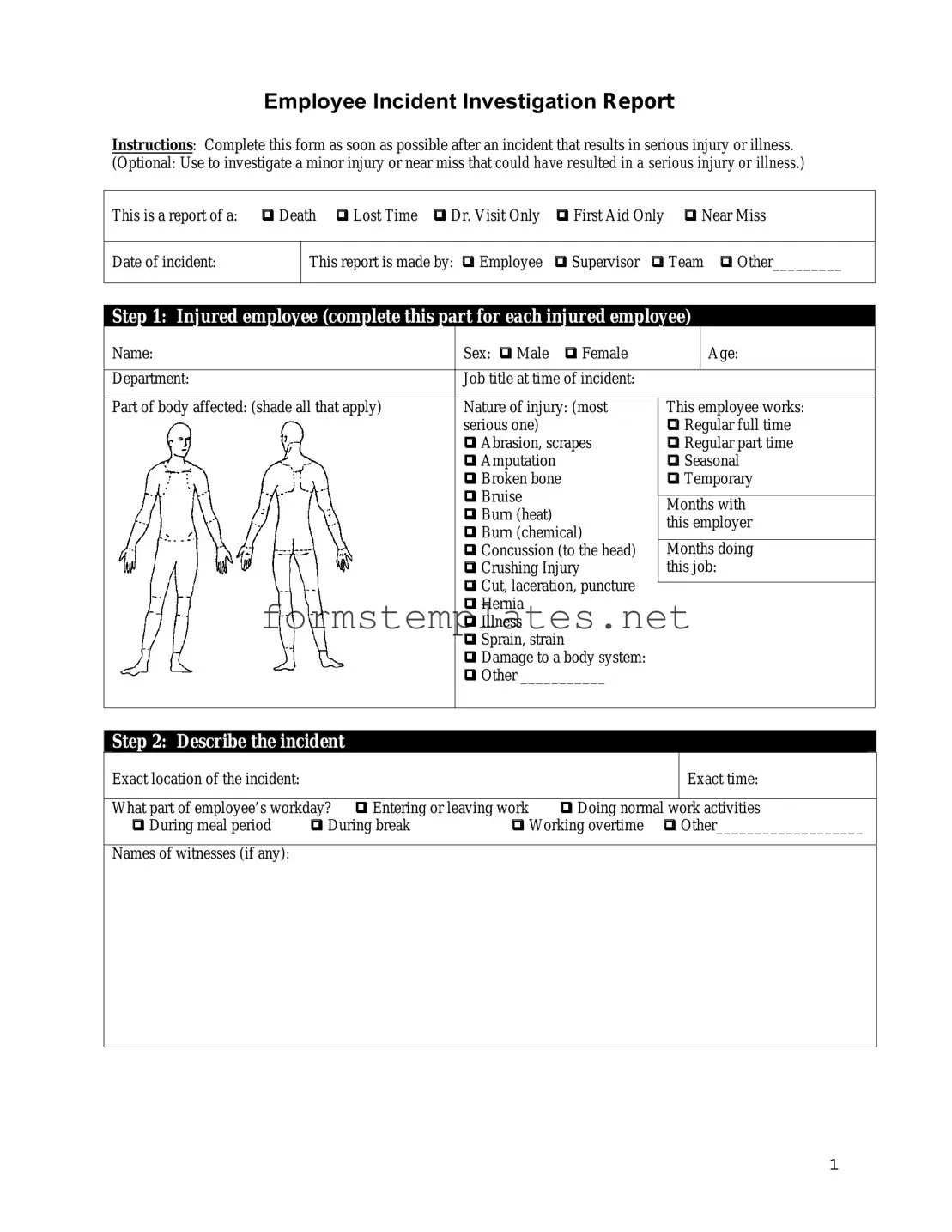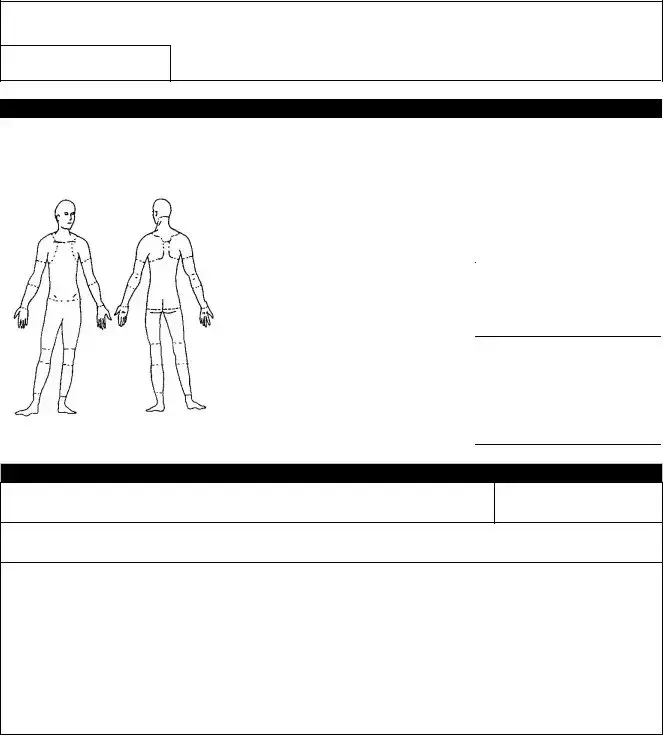The Employee Accident Report form serves as a crucial document for recording details about workplace accidents. It helps employers understand the circumstances surrounding the incident, identify any potential hazards, and implement measures to prevent future occurrences. By documenting these events, organizations can also comply with legal requirements and ensure a safe working environment for all employees.
Typically, the employee involved in the accident is responsible for completing the report. However, supervisors or witnesses may also contribute information if necessary. It is essential that the form is filled out as soon as possible after the incident to ensure accuracy and comprehensiveness.
The report should capture various details, including:
-
The date, time, and location of the accident
-
A description of what happened
-
The names of individuals involved, including witnesses
-
The nature of the injuries sustained
-
Any equipment or materials involved in the incident
-
Actions taken immediately following the accident
Providing thorough and accurate information will facilitate a better understanding of the incident and assist in any necessary follow-up actions.
When should the Employee Accident Report be submitted?
Timeliness is key. The report should be submitted as soon as possible, ideally within 24 hours of the incident. Prompt reporting ensures that details remain fresh in the minds of those involved, which is vital for accurate documentation and analysis.
What happens after the Employee Accident Report is submitted?
Once the report is submitted, it is typically reviewed by a supervisor or designated safety officer. They will assess the information, investigate the circumstances surrounding the accident, and determine if further action is required. This may include conducting safety audits, implementing new training programs, or making necessary changes to workplace policies.
Can the Employee Accident Report be amended after submission?
Yes, if new information comes to light after the report has been submitted, it can be amended. It is important to keep the report accurate and up-to-date, as this will aid in understanding the incident and improving workplace safety. Employees should communicate any changes to their supervisor or the designated safety officer.
Generally, the information contained in the Employee Accident Report is treated as confidential. Access is typically limited to management, human resources, and safety personnel who need the information to address the incident and improve safety protocols. However, there may be circumstances under which this information could be disclosed, such as legal proceedings or regulatory investigations.
What if I feel uncomfortable filling out the report?
If you feel uneasy about completing the Employee Accident Report, it is important to seek assistance. You can approach your supervisor or a trusted colleague for guidance. Additionally, many organizations have designated safety officers or human resources personnel who can help ensure that your concerns are addressed and that the report is filled out correctly.
What resources are available for further assistance with the report?
Organizations often provide training sessions or workshops on workplace safety and accident reporting. Employees can also consult the employee handbook or company intranet for specific policies related to accident reporting. If you have further questions, reaching out to your human resources department can provide clarity and support.



